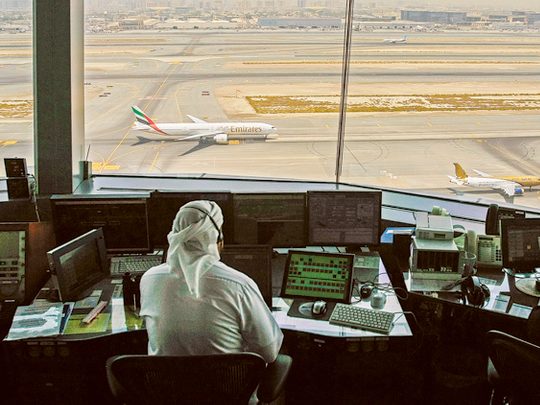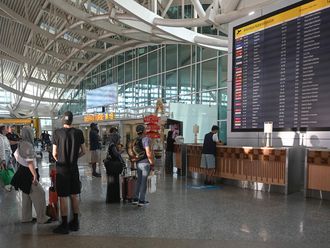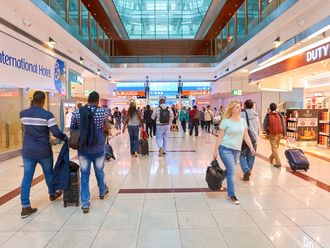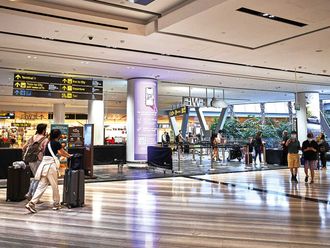
Dubai: Emirates will be under pressure as Dubai International closes one runway for 80 days starting on Thursday, an executive at the airline said as he outlined the airline’s contingency strategy.
In a briefing to the media on Monday, Mohammad H Y Mattar, Divisional Senior Vice-President of Emirates Airport Services, said the airline is ready to handle any disruptions that may occur.
Dubai International is undergoing scheduled runway maintenance over the 80-day period, cutting the two runway airport down to just the one. The reduction will hit capacity, with Emirates previously announcing it will ground up to 22 aircraft over the period.
Revenues will also take a loss of Dh1 billion, the airline recently confirmed.
Mattar advised passengers travelling between May 1 and July 20 to ensure that they check in on-time due to strict take-off and landing time constraints at Dubai International.
He said that any delay could have a roll-on effect on traffic flying in and out of the airport.
Over the 80-day period, Emirates will enforce a strict policy at Dubai International, with check-in desks closing one hour prior to flight departure. Mattar said the airline is unable to offer its usual flexibility due to the constraints. He added passengers must reach their boarding gate no later than 20 minutes before scheduled departure.
In the instance of fog or other disruptions, Emirates has spoken with other UAE and Gulf airports to assist in the possible overflow. Mattar said that flights will be diverted to alternative airports only when necessary, which will eventually land at Dubai International once clearance is granted.
Mattar said that all stakeholders at Dubai International will be under pressure during the runway closure but added that Emirates has planned for three alternative scenarios if a flight is diverted.
“We will work closely with our neighbour airports,” he said.
The first scenario is a simple refuel and take-off, for the aircraft and passengers to then land at Dubai International. If there is small delay then passengers could be allowed off the aircraft and be able to wait in the terminal until clearance is granted for the aircraft to resume its flight. However, thirdly, if there is a lengthy delay and it is practical, Mattar said passengers at UAE airports would be transferred by road.
Emirates is working with relevant authorities, including immigration officials, to ensure that transit passengers that do not have the necessary UAE visa will be able to transfer by road.
Emirates previously announced that there will be flight reductions to 41 destinations. Mattar declined to name the impacted destinations, however, he said the company would operate 5,400 less flights as part of the reduction.
In an effort to stem the reduction Emirates is increasing capacity on routes that usually carry multiple daily flights. Mattar said that flights with the Airbus A340 aircraft have been upgraded to Boeing 777s and that Boeing 777 flights have been upgraded to the superjumbo Airbus A380.
Emirates will also rely on smooth global operations with its flights departing international airports facing the same constraints. The aircraft must land at Dubai International at a certain time, meaning disruptions at overseas airports are likely to have a roll-on effect in Dubai.
The airline is grounding 20 aircraft in May, 22 in June and 22 in July. Emirates will use the grounding to perform maintenance and upgrading work. Mattar declined to say whether any of the A380 fleet will be grounded.
Emirates operates the world’s largest A380 fleet with 47 of the aircraft and took its first delivery in 2008.












